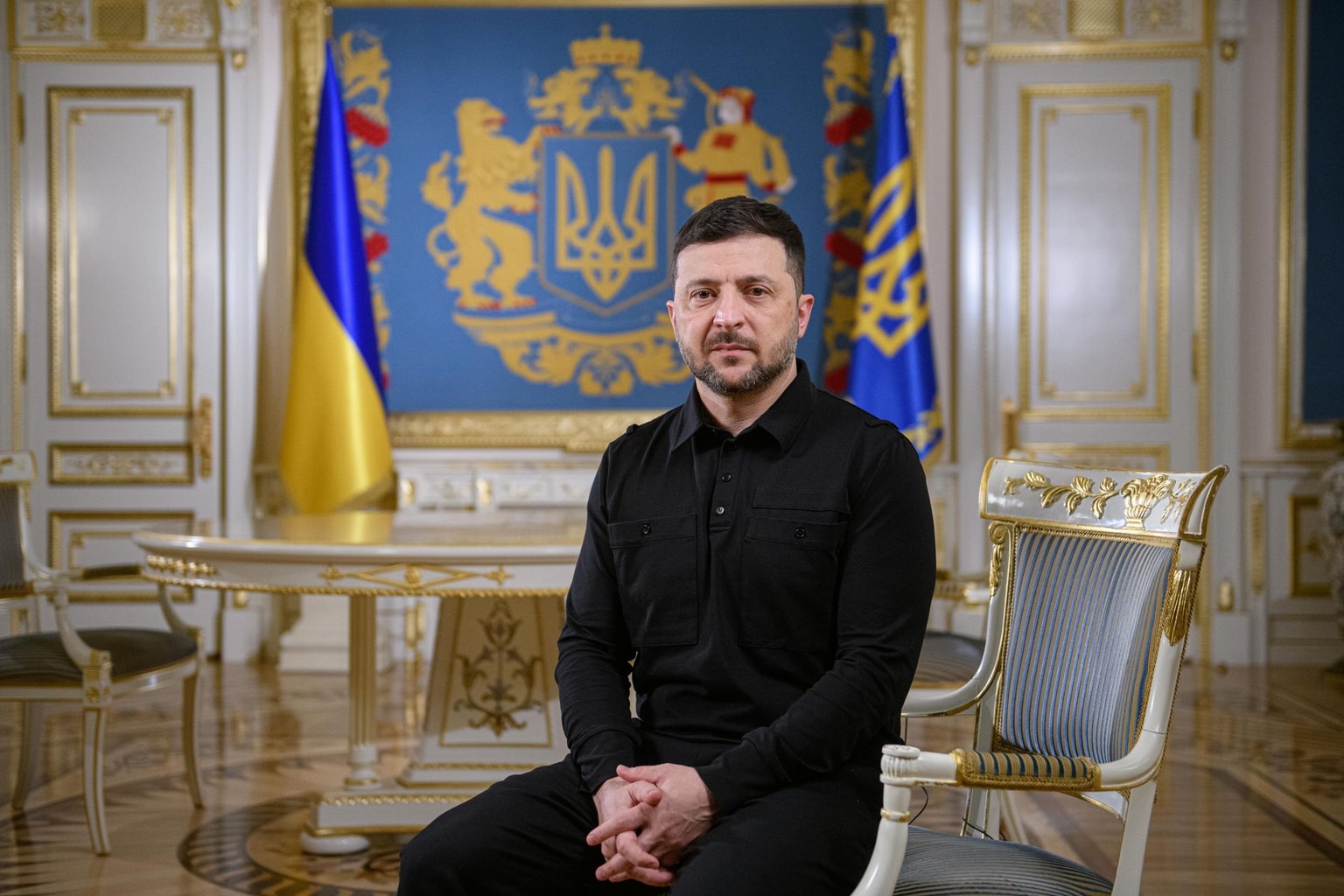Ukraine Business Roundup — Russian assets for Ukraine

The following is the June 19, 2024 edition of our Ukraine Business Roundup weekly newsletter. To get the biggest news in business and tech from Ukraine directly in your inbox, subscribe here.
The Group of Seven (G7) leaders confirmed on June 13 a plan to provide Ukraine with a $50 billion loan by the end of the year, to be repaid using interest from approximately $300 billion of Russian Central Bank assets frozen after the invasion in 2022.
How will it work? Well, the details of the agreement — including who will fund the loan and how the money will be spent — are still being finalized with little information available to the public.
In a statement released by the G7, the group noted that the loan was “without prejudice to possible other contributions,” leaving the door open to future confiscation of the assets themselves.
The new plan is a “breakthrough,” but Ukraine’s goal is still to seize the full worth of the assets, said experts speaking at a panel event in Kyiv discussing Russian asset seizure on June 17.
The event, which discussed ways to confiscate Russian assets in favor of Ukraine, was hosted by the Center for Economic Strategy (CES) in coordination with the International Center for Ukrainian Victory and KI Insights. KI Insights is an analytical unit backed by the Kyiv Independent.
“This money will obviously help Ukraine survive,” said Andrii Mikheiev, an international law and anti-corruption expert at the advocacy NGO International Centre for Ukrainian Victory.
“But as for justice and as for reconstruction, I don't think we're talking about an amount of money that would be enough.”
While the $50 billion loan will not be able to cover the $486 billion recovery costs, estimated by the World Bank, it will be able to sustain Ukraine for a year, said Yuliya Ziskina, a senior legal fellow for the nonprofit advocacy group Razom for Ukraine.
“This is an interim step, and that is not a substitute for full confiscation,” she said.
Read the full article here.

Longer outages
Ukraine’s energy companies are continuing to warn about further power shortages both now and in winter.
What are they saying? State grid operator Ukrenergo’s head Volodymyr Kudritsky said on Sunday Ukrainians will face lengthy, daily interruptions until the end of July as repairs at nuclear power plants put further strain on the country's already heavily damaged energy system.
Repairs on reactor units in Ukraine's nuclear power plants necessitate the power cuts as Russian attacks have destroyed or damaged non-nuclear power plants and energy infrastructure Ukraine would have been able to use to supplement the shortage, he said.
Later on June 17, Serhiy Kovalenko, CEO of energy supplier Yasno, which is part of Ukraine’s largest private energy company DTEK, said that Ukrainians may have electricity for 6-7 hours per day this winter if the electricity deficit in the country remains at 35%.
Kovalenko said it is still unclear what power generation capacity will be available before the beginning of the heating season, but that there would certainly be a deficit in winter. He called on residents and businesses to prepare for a “significant” shortage.
The country’s energy companies are working to repair energy infrastructure, but repeated Russian attacks on the energy system make the situation unpredictable.
Some good news: The U.S. will provide Ukraine with $1.5 billion in aid to support the country's energy infrastructure, address urgent humanitarian needs, and bolster civilian security, including the protection of the border, Vice President Kamala Harris said on June 15.

Air raids & business
Air raids in Kharkiv Oblast last an average of 16 hours a day, significantly complicating business operations, Governor Oleh Syniehubov said on June 17.
Moscow has recently intensified attacks against Kharkiv, Ukraine's second-largest city, as well as Kharkiv Oblast, with the use of missiles, glide bombs, and drones, destroying energy infrastructure and killing civilians.
"Work for businesses is hampered by incessant air raids – 16 hours on average (per day)," Syniehubov said.
"The power outage schedules are also in effect. We are constantly communicating with our retailers to maintain their presence in the oblast."
Nearly 50,000 residents in Kharkiv Oblast are without electricity supply due to the destruction caused by the Russian attacks, according to the governor.
Local authorities are trying to restore the power supply, but the work of the services is complicated by the proximity to the Russian border, Syniehubov added.

Japanese technology for Ukrainian businesses
Ukraine's Economy Ministry, in cooperation with the United Nations Industrial Development Organization (UNIDO), announced on June 17 the launch of a $188 million grant project to transfer Japanese technology to Ukraine.
"This project opens up opportunities for businesses to receive a grant of up to $10 million, and the total project budget is $188 million," the statement said.
The project's primary goal is to support the restoration of the green industry and ensure Ukraine's long-term sustainable development. The initiative, funded by Japan, also aims to have a social and economic impact and support people affected by the war, the ministry said.
The project includes foreign technology transfer, developing businesses' potential, and creating joint ventures in key industries.
The initiative will consider businesses connected with sustainable energy implementation, digital transformation, med-tech, and agro-tech, among other fields.

10-year low in wheat exports
Ukraine's wheat exports in the marketing year 2024-2025 are expected to amount to 13 million metric tons, the lowest figure in the past decade, the U.S. Agriculture Department said in its June report.
The authors linked this development to a drop in production and to Russia's disruption of Black Sea shipping lanes, which have traditionally been Ukraine's key export routes.
The report also estimated Ukraine's wheat production in the upcoming marketing year at 19.5 million metric tons, a 3.5-million decrease compared to last year's harvest.
Why does this matter? Ukraine is one of the world's leading agricultural producers and has been a major supplier of grain and other products to countries in Africa and Asia.
Ukraine's losses are further compounded by the destruction wrought by Russia's war and by the occupation of parts of its territory, where Moscow continues to loot local resources, including grain.
Russia, the world's leading wheat exporter, is widely believed to be stealing Ukrainian grain and selling it off on global markets as its own product.
The report showed a significant rise in Russian wheat exports in the past 10 years, but volumes are expected to drop in 2024-2025 to 48 million metric tons from 52 million during the previous period. This was mainly linked to a poor harvest caused by harsh weather conditions.
What else is happening
Bloomberg: Talks to rework $20 billion Ukraine debt fail to yield deal
The first formal talks between Kyiv and debt creditors on restructuring more than $20 billion in international bonds ended without a deal after creditors pushed back on Ukraine’s proposal for debt relief, Bloomberg reported. Ukraine is requesting debt holders accept bigger losses in order to allow it to finance its defense against Russia’s war and to have resources for reconstruction when the war ends, Bloomberg said.
EU ambassadors approve starting accession talks with Ukraine on June 25
EU and Ukrainian officials are reportedly pushing for the talks to start by June 25 before Hungary takes the presidency of the Council of the EU in July. "Ambassadors agreed in principle on the negotiating frameworks for the accession negotiations of Ukraine and Moldova," the Belgian presidency said on X. "The Belgian presidency will call the first intergovernmental conferences on June 25."
Zelensky signs law on single roaming zone with EU
Under the "roam like at home" (RLAH) program, Ukrainians will not pay additional fees to use their mobile phone for communications and the Internet in the 27 EU countries. The same rules will apply to users of European operators traveling to Ukraine.
Russian occupation of Zaporizhzhia nuclear power plant costs Ukraine over $5 billion
Ukraine's nuclear energy agency Energoatom has lost over Hr 210 billion ($5.2 billion) due to Russia's occupation of the Zaporizhzhia nuclear power plant, Energoatom's acting head Petro Kotin said on June 18.
US arms company to produce munitions in Ukraine
Northrop Grumman, an American weapons manufacturer, plans to produce ammunition in Ukraine bankrolled by Ukrainian money, the Breaking Defense magazine reported on June 18, citing a company official. Northrop's agreement is the first known deal of its kind between a U.S. defense company and a Ukrainian government for producing arms in Ukraine.










